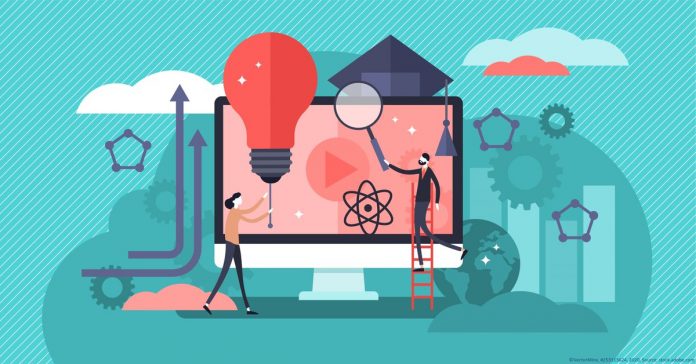Back in 2019, if someone would have ventured a guess as to what the future of EdTech would look like – they would have invariably been wrong. Standing where we are, in 2021, we have seen the most devastating humanitarian crisis to have impacted the world, and yet, with teachers rising to the occasion, an unprecedented adoption of EdTech solutions.
The pandemic and the ensuing lockdown has catalyzed the adoption of technology in education in an irreversible manner and has also established the credibility of EdTech as a viable learning method beyond even a shadow of a doubt.
Looking ahead, I see rapid changes in the EdTech landscape as it tries to match up with the changing times:
Teachers becoming an integral part of EdTech –
The unfortunate reality of most prevalent EdTech brands is that they have always tried, fruitlessly, to substitute the teacher. Whatever may change, teachers remain at the core of our school education system. In keeping with the B2C-B2B paradigm of most industries, EdTech brands have, insofar, either tried to be a classroom teaching aid (B2B) or a consumer product that ignores the teachers (B2C). With blended learning becoming the new order of the day, EdTech brands need to include the teacher and empower them by offering teaching aids that aim to support and not replace the teacher.
Our esteemed educators offer a massive wealth of expertise and experience that needs to be more effectively utilized by EdTech brands.
As learning becomes more blended, and classrooms get flipped, the teacher’s role changes from an emitter of information in the typical chalk-and-talk setup to that of a facilitator or moderator in an online setting, aiding content discovery and appropriate deliberations around the same.
Becoming more inclusive –
As the lockdown progressed through the months in 2020, and EdTech platforms became more and more mainstream, it also exposed several gaps in the way longstanding EdTech brands approach school education. The language barrier became evident, as a large non-English speaking audience felt left out. Expensive hardware-dependent products failed to serve the socio-economic strata where another device was beyond the family’s means.
As an industry, I believe that we need to put all our efforts into developing vernacular content in order to ensure equity in learning across geographical and linguistic barriers. Diversity in language should be treated as the immense wealth it is, rather than as a stumbling block. When a language becomes extinct from disuse, it represents the extinction of a culture, and this cannot be accepted in a country like ours that derives its strength from its diversity.
Device-agnostic services like OTT platforms have exemplified the value of exploiting the latest streaming technologies. With products finding more and more takers outside urban India, if OEMs and Telcos can enable access in rural areas, affordable online solutions can make a world of difference. DTH, Telco, and other D2C services have a massive opportunity here to partner with EdTech brands to deliver consumer delight.
Public-Private Partnerships and NGO efforts could take EdTech to an audience that has always been considered unreachable to modern technologies. The same would keep happening more and more frequently in the days to come.
Besides these, another important aspect of inclusion is engaging the outliers – both the overachievers as well as the disengaged students. While most EdTech brands have always served the Central quintile with their concept, as the use of EdTech and adoption of online learning becomes more and more prevalent, there will be greater value in delivering learning vectors fr
Adding value to all stakeholders (including teachers) and bringing a smile to a child’s lips by simplifying his or her life are the two most important aspirations for Edutech in 2021.
Integrated and Multi-disciplinary education to gain prominence –
As the schools start to reopen across the country, it will put to test the longevity and elasticity of the system with respect to online methods. However, my insights show that the NEP 2020 along with the accelerated adoption of technology has led to the watershed moment for blended learning. Once schools reopen, students will continue to adapt to the new normal in education. In fact, the greatest beneficiary might be those toddlers who had just started their learning journey. In some years, one would see them reveling in their comfort level with the online and blended learning methods.





























